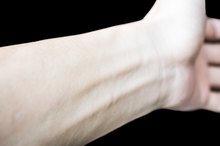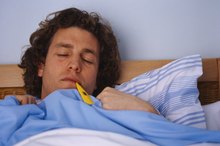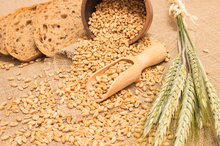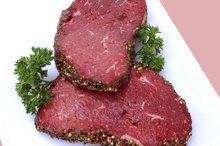Iron and Chills
Iron is an essential mineral for many biological processes. Deficiency in iron is common and widespread. The condition affects your entire body and may lead to anemia if left untreated. Anemia is a serious condition that can impair your physical and mental abilities. Recognizing the early signs of a deficiency may be difficult since the symptoms are vague and may correspond to other conditions. Tiredness, weakness and chills are just a few common symptoms that may indicate an underlying iron deficiency.
Chills
People with an iron deficiency may have trouble staying warm. They may feel cold even when others surrounding them are warm. In addition, they may experience cold hands and feet in the absence of any environmental cause. Chills also can be caused by exposure to cold, hypothermia, fever and infection.
Other Symptoms
Iron Deficiency & Skin
Learn More
Other signs of a low iron level include tiredness, weakness and lethargy. Pale skin, brittle hair, dizziness, shortness of breath and chest pain also are symptoms of iron deficiency. Some people with low iron levels also develop restless leg syndrome, a condition that causes tingling sensations in the legs that are relieved by movement. If your iron levels are low, you may experience difficulty concentrating on tasks and problems staying motivated. Researchers at Cornell University have found that even a modest decrease in iron levels can cause impaired physical performance.
Cause
In your body, iron is an essential part of the hemoglobin protein. This is the primary protein in red blood cells and it serves to carry oxygen molecules from your lungs to other parts of the body. Without sufficient iron, your heart needs to work harder to transport oxygen. This results in the common symptoms of fatigue, chills, weakness and low endurance.
Treatment
Signs & Symptoms of Iron Deficiency in Teens
Learn More
Your doctor can determine whether you have low iron levels using several simple blood tests. Depending on how low your iron levels have become, your doctor may prescribe iron supplements or dietary changes to boost your plasma iron levels. A typical therapeutic dose of iron consists of 50 to 60 mg of oral elemental iron, taken two times each day. You also can add high-iron foods to your diet such as lean meats, spinach, raisins and fortified breakfast cereals.
Related Articles
References
Writer Bio
Amy Liddell has been writing on health and medicine since 2004. She is also a biomedical scientist and studies human cancer. Her articles have appeared in scientific journals, medical textbooks and on health-related consumer websites. Liddell holds a Doctor of Philosophy in biological and biomedical sciences from Harvard University.








